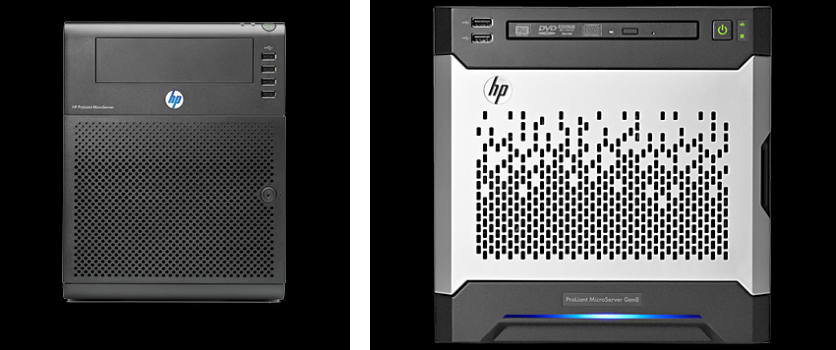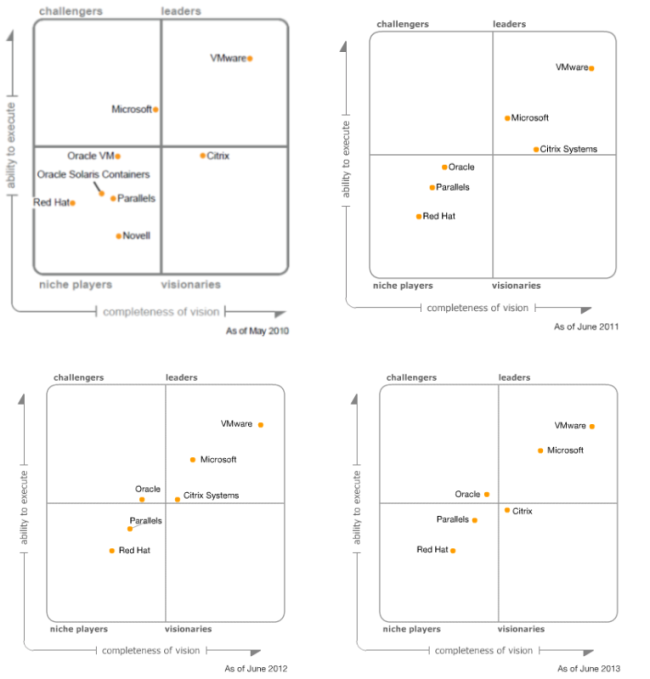The focus on applications often gets lost in the shuffle when implementing virtualization which is unfortunate because if you look at any server environment its sole purpose is really to serve applications. No matter what hardware, hypervisor or operating system is used, ultimately it all comes down to being able to run applications that serve a specific function for the users in a server environment. When you think about it, without applications we wouldn’t even have a need for computing hardware, so it’s important to remember, it’s really all about the applications.
So with that I wanted to provide 5 tips for monitoring applications in a virtual environment that will help you ensure that your applications run smoothly once they are virtualized.
Tip 1 – Monitor all the layers
The computing stack consists of several different components all layered on top of each other. At the bottom is the physical hardware or bare metal as it is often referred to. On top of that you traditionally had the operating system like Microsoft Windows or Linux, but with virtualization you have a new layer that sits between the hardware and the operating system. The virtualization layer controls all access to physical hardware and the operating system layer is contained within virtual machines. Inside those virtual machines is the application layer where you install applications within the operating system. Finally you have the user layer that accesses the applications running on the virtual machines. Within each layer you have specific resource areas that need to be monitored both within and across layers. For example storage resources which are a typical bottleneck in virtual environments need storage management across layers so you get different perspectives from multiple viewpoints.
To have truly effective monitoring you need to monitor all the layers so you can get a perspective from each layer and also see the big picture interaction between layers. If you don’t monitor all the layers you are going to miss important events that are relevant at a particular layer. For example if you focus only on monitoring at the guest OS layer, how do you know your applications or performing as they should or that your hypervisor does not have a bottleneck. So don’t miss anything when you monitor your virtual environment, you should monitor the application stack from end to end all the way from the infrastructure to the applications and the users that rely on them.
Tip 2 – Pay attention to the user experience
So you monitor your applications for problems but that won’t necessarily tell you how well it’s performing from a user perspective. If you’re just looking at the application and you see it has plenty of memory and CPU resources and there are no error messages you might get a false sense of confidence that it is running OK. If you dig deeper you may uncover hidden problems, this is especially true with virtualized applications that run on shared infrastructure and multi-tier applications that span servers that rely on other servers to properly function.
The user experience is what the user experiences when using the application and is the best measure of how an application is performing. If there is a bottleneck somewhere between shared resources or in one tier of an application it’s going to negatively impact the user experience which is based on everything working smoothly. So it’s important to have a monitoring tool that can simulate a user accessing an application so you can monitor from that perspective. If you detect that the user experience has degraded many tools will help you pinpoint where the bottleneck or problem is occurring.
Tip 3 – Understand application and virtualization dependencies
There are many dependencies that can occur with applications and in virtual environments. With applications you may have a multi-tier application that depends on other services running on other VMs such as a web tier, app tier and database tier. Multi-tier applications are typically all or nothing, if any one tier is unavailable or has a problem the application fails. Clustering can be leveraged within applications to provide higher availability but you need to take special precautions to ensure a failure doesn’t impact the entire clustered application all at once. This may also extend beyond applications into other areas, for example if Active Directory or DNS is unavailable it may also affect your applications. In addition there are also many dependencies inside a virtual environment. One big one is shared storage, VMs can survive a host failure with HA features that bring them up on another host, but if your primary shared storage fails it can take down the whole environment.
The bottom line is that you have to know your dependencies ahead of time, you can’t afford to find them out when problems happen. You should clearly document what your applications need to be able to function and ensure you take that into account in our design considerations for your virtual environment. Something as simple as DNS being unavailable can take down a whole datacenter as everything relies on it. You also need to go beyond understanding your dependencies and configure your virtual environment and virtualization management around them. Doing things like setting affinity settings so when VMs are moved around they are either kept together or spread across hosts will help minimize application downtime and balance performance.
Tip 4 – Leverage VMware HA OS & application heartbeat monitoring
One of the little known functions of VMware’s High Availability (HA) feature is the ability to monitor both operating systems and applications to ensure that they are responding. HA was originally designed to detect host failures in a cluster and automatically restart VMs on failed hosts on other hosts in the cluster. It was further enhanced to detect VM failures such as a Windows blue screen by monitoring a heartbeat inside the VM guest OS through the VMware Tools utility. This feature is known as Virtual Machine (VM) Monitoring and will automatically restart a VM if it detects the loss of the heartbeat. To help avoid false positives it was further enhanced to detect I/O occurring by the VM to ensure that it was truly down before restarting it.
VMware HA Application Monitoring was introduced as a further enhancement to HA in vSphere 5 that took HA another level deeper, to the application. Again leveraging VMware Tools and using a special API that VMware developed for this you can now monitor the heartbeat of individual applications. VMware’s API allows application developers for any type of application, even custom ones developed in-house to hook in to VMware HA Application Monitoring to provide an extra level of protection by automatically restarting a VM if an application fails. Both features are disabled by default and need to be enabled to function, in addition with application monitoring you need to be running an application that supports it.
Tip 5 – Use the right tool for the job
You really need a comprehensive monitoring package that will monitor all aspects and layers of your virtual environment. Many tools today focus on specific areas such as the physical hardware or guest OS or the hypervisor. What you need are monitoring tools that can cover all your bases and also focus on your applications which are really the most critical part of your whole environment. Because of the interactions and dependencies with applications and virtual environments you also need tools that can understand them and properly monitor them so you can troubleshoot them more easily and spot bottlenecks that may choke your applications. Having a tool that can also simulate the user experience is especially important in a virtualized environment that has so many moving parts so you can monitor the application from end-to-end.
SolarWinds can provide you with the tools you need to monitor every part of your virtual environment including the applications. SolarWinds Virtualization Manager coupled with Server & Application Monitor can help ensure that you do not miss anything and that you have all the computing layers covered. SolarWinds Virtualization Manager delivers integrated VMware and Microsoft Hyper-V capacity planning, performance monitoring, VM sprawl control, configuration management, and chargeback automation to provide complete monitoring of your hypervisor.
SolarWinds Server & Application Monitor delivers agentless application and server monitoring software that provides monitoring, alerting, reporting, and server management. It only takes minutes to create monitors for custom applications and to deploy new application monitors with Server & Application Monitor’s built-in support for more than 150 applications. Server management capabilities allow you to natively start and stop services, reboot servers, and kill rogue processes. It also enables you to measure application performance from an end user’s perspective so you can monitor the user experience.
With SolarWinds Virtualization Manager and SolarWinds Server & Application Monitor you have complete coverage of your entire virtual environment from the bare metal all the way to the end user.





